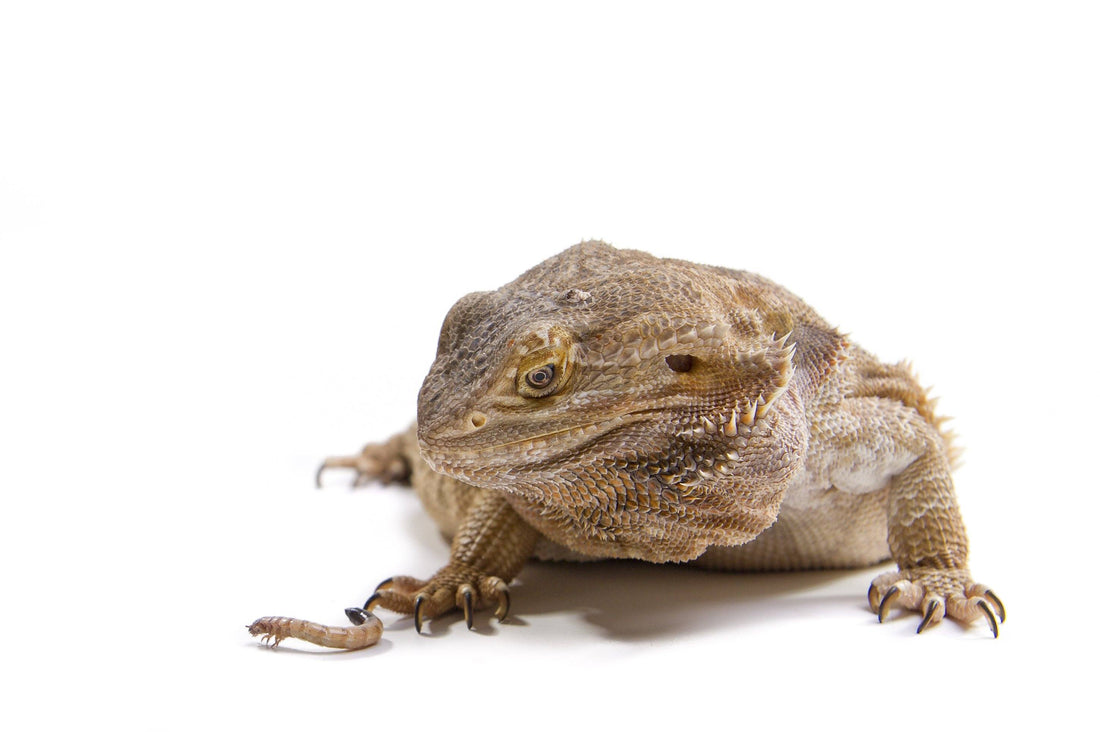Reptile obesity is a serious health problem for pet reptiles, and it’s very difficult to get them to lose excess weight once it’s been gained. So, like most problems, the best way to solve reptile obesity is to prevent it from happening in the first place. Excessive weight gain has many potential causes, so there are many factors you need to consider in order to keep your pet at a healthy weight.
Pay Attention to Portion Size
Portion size isn’t just about avoiding the risk of choking or making sure your snake can swallow its meal. Reptiles are generally opportunistic feeders in the wild, which means that they take what they can get. This is a smart survival mechanism for a wild animal, since they never know when their next meal will be. However, this survival instinct can cause a reptile to eat itself to death in captivity. This means that the keeper is responsible for controlling how much food the reptile has access to.
Exactly what constitutes an “appropriate” portion size varies depending on the reptile. A good general rule for snakes is that one meal should be around 10% of its weight, although exact best practice varies according to the species. For example, pythons are “stretchier” and can handle larger meals than less “stretchy” snakes like boas.
For insect-eating reptiles like bearded dragons, an appropriate portion of feeder insects is approximately how many bugs they can eat in 5 minutes. Again, although this is a good general rule, exact best practice tends to vary according to species. For example, an appropriate portion of insects for a leopard gecko is one inch of bug for every inch of the gecko’s length.
For herbivorous reptiles, an appropriate portion of greens is approximately equivalent to the size of their abdomen. For example, a tortoise should be given a plate of greens approximately the same size as their plastron. However, this standard also varies according to species.
Omnivorous reptiles have more complex portion size needs due to the fact that they eat a variety of foods, and should be considered on a species-by-species basis.
Don’t Feed Too Often
You can have the right portion size, but if you feed your reptile too often, that can also contribute to excessive weight gain. Because they’re cold-blooded, reptiles have slower metabolisms and don’t need to eat nearly as much or as often as warm-blooded animals like dogs and humans do.
Optimum feeding frequency varies widely from species to species. Some reptiles do best when allowed to eat every day or two, while others can go four to eight weeks without eating. Snakes are particularly specialized at taking food infrequently, while herbivores tend to best when they can “graze” daily.
Even for reptiles that need to eat more frequently, utilizing occasional “fast days” for your reptile is generally a harmless way to help keep them fit, trim, and enthusiastic about food.
Use Low- to Moderate-Fat Feeders
Different feeders have different amounts of fat as part of their nutritional composition. Fat is an essential part of a balanced diet, but considering that fat yields more calories (energy) per gram than protein or carbohydrates, giving your pet reptile too many high-fat feeders is a quick way to cause reptile obesity.
FEEDER INSECTS
Low-Fat Insects
- Crickets
- Grasshoppers
- Dubia roaches
- Discoid roaches
- Hornworms
- Silkworms
- Earthworms
- Snails
- Fruit flies
Moderate-Fat Insects
High-Fat Insects
- Superworms
- Giant mealworms
- Waxworms
- Butterworms
PREY ANIMALS
Low-Fat Prey
- Quail
- Adult chicken
- Young mice
- Adult mice
- Green anoles
Moderate-Fat Prey
- Pinky rats
- Juvenile rats
- Day-old chicks
High-Fat Prey
- Adult rats
- Jumbo rats
- Jumbo mice
(Data sourced from Rodent Pro)
Note that bird and mammalian feeders tend to have a different type of protein and a higher overall caloric value than insect feeders, so they should be offered sparingly to insectivorous species.
Beware of Fruit
Fruit makes a great treat, and offers a great spectrum of vitamins and minerals, but it’s full of sugar. Foods that are high in sugar, can damage teeth as well as contribute to obesity in reptiles as well as humans. For this reason, fruit should be used as a treat only — unless you are caring for a naturally frugivorous (fruit-eating) species. Particularly high-sugar fruits should be used extra sparingly.
Low-Sugar Fruits
- Raspberries
- Strawberries
- Blackberries
- Guavas
- Cantaloupe
- Peaches
- Papaya
- Cactus fruit
High-Sugar Fruits
- Mangoes
- Grapes
- Cherries
- Pears
- Figs
- Bananas
Use Fewer Treats
We all know that the key to a reptile’s heart is food, but there is such a thing as loving your pet to death. Too many treats often leads to reptile obesity. It’s best to keep the treats few and far between. As a general rule (excluding snakes), offer no more than one small treat per week.
If you’re using treats as a training tool, it’s a good idea to switch to healthier food items and smaller portions to use as rewards.
Use a Larger Enclosure
Wild reptiles generally each have a territory — a certain amount of space that they have claimed as their own. These individual territories are MUCH larger than the boxes we keep them in as pets. This goes for even the smallest reptiles or the reptiles housed in generous exhibits at the zoo!
As a result, wild reptiles get a lot more exercise than their captive counterparts. And although they may be pets, pet reptiles have the same genes and physiology as wild reptiles, which means they are built to get a lot of exercise every day.
Your reptile will spend most of its life — if not its entire life — inside its enclosure , which means that enclosure size has an effect on the amount of exercise it can get. In other words, although there are “minimum” recommended enclosure sizes listed in care sheets, it’s best to provide your pet reptile with the biggest enclosure you can manage!
Offer More Enrichment
There are two primary types of enrichment for reptiles: environmental enrichment, and enrichment activities. Environmental enrichment is a passive form of enrichment that is usually tied to the way that an enclosure is laid out. Enrichment activities are an active form of enrichment that are temporary in nature, but also more challenging.
Providing enrichment engages your reptile, reducing boredom and encouraging it to exercise more. Here are some ideas:
- Multiple hiding places
- Loose (diggable) substrate
- Climbing branches/vines
- Hollow logs
- Rearranging the enclosure
- Puzzle feeders
- Food hidden around the enclosure
- Chasing live insects
- Handling
- Supervised free roaming
And that’s just the beginning!
Conclusion
The good news is that it’s generally hard for a juvenile reptile to become overweight. The bad news is that reptile obesity is actually pretty easy for an adult, as they generally don’t need to eat as often. Be careful, pay attention to your pet’s body condition, and you should be able to keep them healthy and fit for their entire life!











